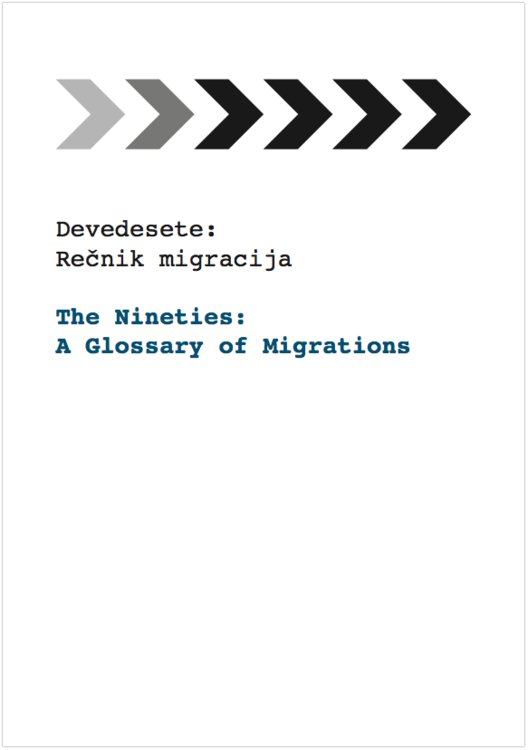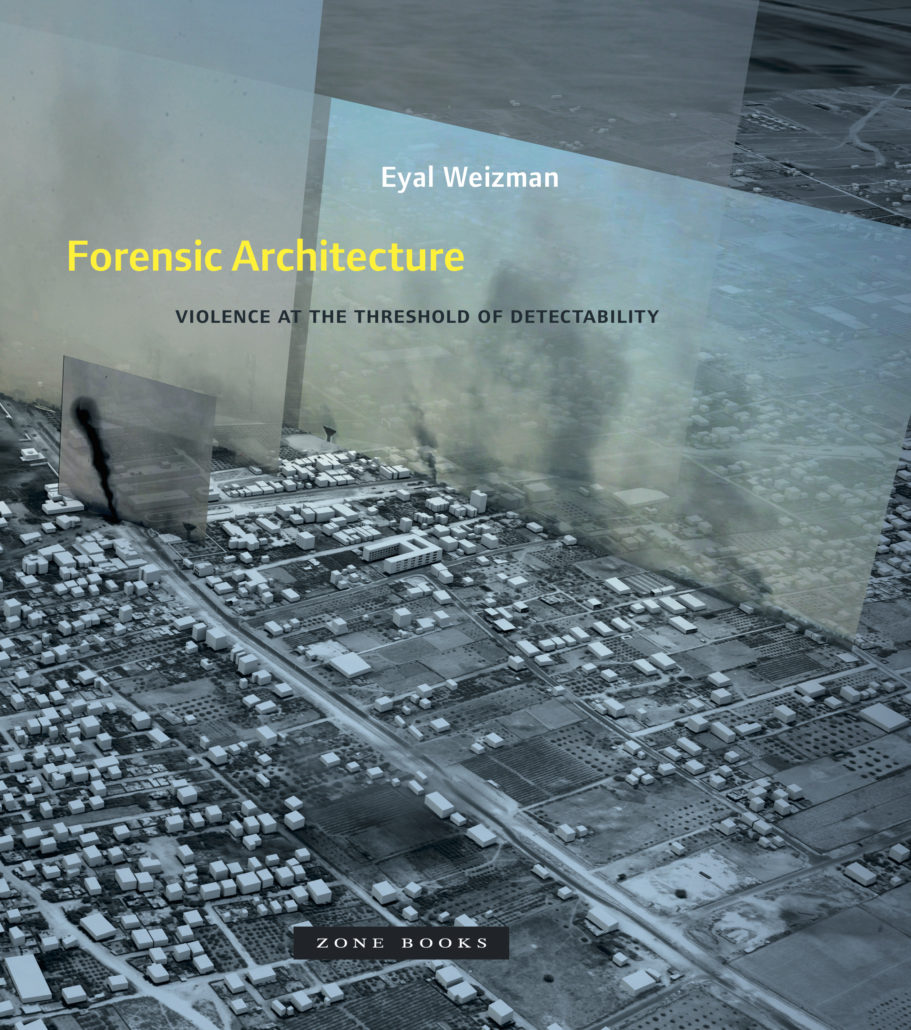The Nineties: A Glossary of Migrations (2019) [Serbian/English]
Filed under catalogue | Tags: · 1990s, activism, art, civil society, migration, politics, serbia, trauma, war, yugoslavia

“The catalogue published to accompany an exhibition on the mass migrations of the population to and from Serbia over the course of the 1990s. The primary concern of the exhibition is to map the different forms of engagement, from the 1990s to the present, which have, in the field of art, activism and civil society, addressed social, cultural, political and legal issues created in these extremely complex and traumatic migration processes.”
Edited by Neda Knežević
Publisher Museum of Yugoslavia, Belgrade, 2019
ISBN 9788684811655
315 pages
Marco Scotini, Elisabetta Galasso (eds.): Politics of Memory: Documentary and Archive (2017)
Filed under book | Tags: · archive, cinema, documentary, documentation, film, memory, migration, politics, war

“The anthology Politics of Memory aims to investigate the document as such, as an objective trace left by events, as material proof or the creation of reality – the strategies with which they transform a state of memory into State memory, those by means of which a historical removal is enacted, those, ultimately, in which there is an attempt to challenge permanent or temporary amnesia, opening up to the future. The artists and filmmakers contributing to this publication represent the most advanced area on an international scale of a research that inaugurates a new relationship between artistic practices and the documentary.
This publication brings together a cycle of conferences held between 2009 and 2013 at NABA – Nuova Accademia di Belle Arti Milano by international artists and film-makers. It is the result of a multi-year research project promoted by the Visual Arts Department and, more specifically, the MA in Visual Arts and Curatorial Studies. This program is aimed at encouraging the comparison of international artistic experiences that have investigated forms of documentary making and archiving, beginning with the subject of memory seen as a critical exercise and practice of resistance.”
Contributions by John Akomfrah, Eric Baudelaire, Ursula Biemann, Harun Farocki, Yervant Gianikian and Angela Ricci Lucchi, Khaled Jarrar, Lamia Joreige, Gintaras Makarevičius, Angela Melitopoulos, Deimantas Narkevičius, Lisl Ponger, Florian Schneider, Eyal Sivan, Hito Steyerl, Jean-Marie Teno, Trinh T. Minh-ha, Wendelien van Oldenborgh, Clemens von Wedemeyer, Mohanad Yaqubi and Reem Shilleh.
Publisher Archive Books, Berlin, 2017
ISBN 3943620336, 9783943620337
237 pages
PDF (22 MB, updated on 2019-8-25)
Comment (0)Eyal Weizman: Forensic Architecture: Violence at the Threshold of Detectability (2017)
Filed under book | Tags: · anthropology, architecture, forensics, human rights, israel, law, palestine, politics, violence, war

“In recent years, a little-known research group named Forensic Architecture began using novel research methods to undertake a series of investigations into human rights abuses. Today, the group provides crucial evidence for international courts and works with a wide range of activist groups, NGOs, Amnesty International, and the UN.
Beyond shedding new light on human rights violations and state crimes across the globe, Forensic Architecture has also created a new form of investigative practice that bears its name. The group uses architecture as an optical device to investigate armed conflicts and environmental destruction, as well as to cross-reference a variety of evidence sources, such as new media, remote sensing, material analysis, witness testimony, and crowd-sourcing.
In Forensic Architecture, Eyal Weizman, the group’s founder, provides, for the first time, an in-depth introduction to the history, practice, assumptions, potentials, and double binds of this practice. The book includes an extensive array of images, maps, and detailed documentation that records the intricate work the group has performed.
Included in this volume are case studies that traverse multiple scales and durations, ranging from the analysis of the shrapnel fragments in a room struck by drones in Pakistan, the reconstruction of a contested shooting in the West Bank, the architectural recreation of a secret Syrian detention center from the memory of its survivors, a blow-by-blow account of a day-long battle in Gaza, and an investigation of environmental violence and climate change in the Guatemalan highlands and elsewhere.
Weizman’s Forensic Architecture, stunning and shocking in its critical narrative, powerful images, and daring investigations, presents a new form of public truth, technologically, architecturally, and aesthetically produced. Their practice calls for a transformative politics in which architecture as a field of knowledge and a mode of interpretation exposes and confronts ever-new forms of state violence and secrecy.”
Publisher Zone Books, New York, 2017
ISBN 9781935408864, 1935408860
355 pages
Reviews: Regine Debatty (We Make Money Not Art, 2017), Adam Rothstein (New Scientist, 2017), Sława Harasymowicz (Journal of Visual Culture, 2017), David Huber (Artforum, 2017), Joseph Confavreux (Mediapart, 2017, FR), Felix Bazalgette (New York Review of Books, 2018), Martina Tazzioli (Radical Philosophy, 2018), Noah Chasin (Springerin, 2018), Bernard Hay (Review 31, 2018), Anna Altman (n+1, 2018), Viktoriya Yeretska (BauNetz, 2017, DE), Erick Villagomez (Spacing, 2017), Andreas Petrossiants (Brooklyn Rail, 2018).
PDF (31 MB)
Comment (0)
